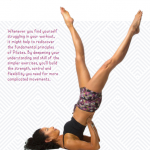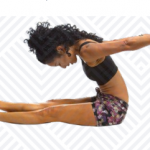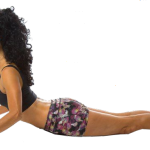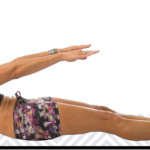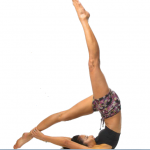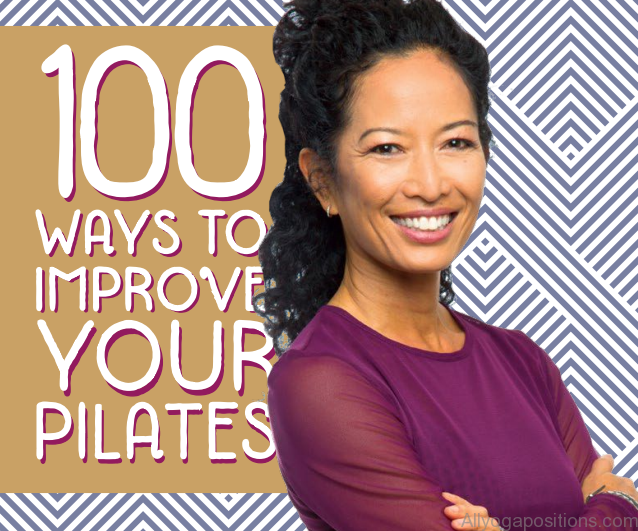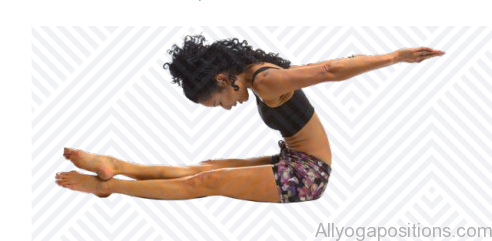THE HUNDRED M AY BE ONE OF THE FIRS T E XERCISE S YOU LE ARNED ON YOUR FIRS T DAY OF PILATES.
It’s an exercise that gets your blood circulating while connecting and engaging the muscles of your center (back, abdominals and seat). At first glance, it may not look that difficult—how hard can it be to pump the arms and count to 100? Or maybe it does look that daunting: I’m supposed to hold up my head for 100 counts and breathe? While you can’t deny that properly executing The Hundred takes practice, the good news is that the principles you learn along the way can pave the way for some of the more difficult exercises on the mat and on the Pilates apparatus. Don’t know where to start? See my Golden Rules (below), which are the keys to making your Hundred more successful. Next I’ll show you how to implement these three guidelines to tackle some of the more difficult exercises on the mat. Keep in mind that whenever you find yourself struggling in your workout, it might help to rediscover the basic exercises and the fundamental principles of Pilates. By deepening your understanding and skill of the simpler exercises, you’ll build the strength, control and flexibility you need for more complicated movements. Here’s an idea: Try testing my Golden Rules around the studio on different pieces of equipment. Before you know it, you’ll surpass 100 ways in which your Pilates has improved!
Step Up Your 100’S: Do The Pilates Hundred Challenge Photo Gallery
GOLDEN RULES
Behold, three guidelines to follow to help you master The Hundred—and the rest of Joe Pilates’ work. RULE #1 Tighten your seat and abdominals to stabilize your hips while reaching dynamically with your legs and feet to create length in the front and back body. For this workout, keep your legs and feet on the mat during The Hundred (see photo below). RULE #2 Activate your abdominals to lift your head while elongating your neck and upper spine away from your hips, creating a two-way stretch—a principle I learned from my mentor Jay Grimes, who defines it as the act of “reaching in (at least) two directions away from a strong center”—that deepens the strength of your center. RULE #3 Connect your arms to your back so your back muscles are initiating each pump while you reach dynamically with your arms and hands to deepen your center. This will help you lighten the weight of your head.
THE ROLL UP…
The most difficult moment in The Roll Up is pictured here. It’s the point in space where you’re either lifting your torso off the ground as you roll forward, or lowering it down before returning it to the mat. As you progress into The Roll Up, maintain Rule #1 by keeping your seat strong and your reach consistent so that you’re forced to move from the center of your body. Don’t let your legs bend, your feet lose their reach, or your hips move back and forth in space. At the same time, maintain Rule #2 as you roll your torso off the mat: Don’t let your neck strain, or your torso shorten. Instead, maintain the two-way stretch as you lift your torso up and over in the forward direction. By the same token, avoid the same pitfalls as you lower. To maintain Rule #3, resist the temptation to lift yourself up from your shoulders. Instead, keep your arms connecting downward into your back even as your spine is rounding forward. It may take some practice to feel your back muscles connecting your arms to your torso— practicing the pumps in The Hundred will help with that.
THE SWAN…
As you set up for The Swan, revisit Rule #1. You may find that activating your abdominals against gravity can be tricky. Take time to balance the work of your seat and your abdominals so that they hold your hips evenly from front to back, just like in The Hundred. Your hips should not tilt forward nor backward when elongating on the mat. When you’re ready to begin arching your upper spine, connect your arms to your back (see Rule #3) by gently pressing your hands into the floor while being careful not to bear too much weight on your hands. Just as in The Hundred, you want your center to do the majority of the work of lifting your head and torso (Rule #2). Think of The Swan as The Hundred upside down, and notice how it challenges the back side of your center (back and seat) to lift your upper torso. Challenge yourself to maintain Rule #1 as you move. The more you arch your upper back, the more work it will take to maintain your hips and the two-waystretch (Rule #2).
HIGH SCISSORS…
The initial setup for High Scissors is The Hundred standing on one end. As you lift both legs to the ceiling, use your center to create as much vertical reach as you were able to achieve in The Hundred (Rule #1). Gravity turns even the setup of this exercise into a great challenge. You may find it helpful to feel the connection of your arms down your back in this position (Rule #3): Stand strongly on your upper arms so that you can elongate your neck away from your upper back, creating a solid base for a more dynamic reach (Rule #2). As one leg reaches away from your head, keep reaching your opposite leg toward the ceiling to maintain that Hundred feeling in your center. It’s difficult to keep your torso lifting as you reach one leg behind you. You can see my struggle to maintain The Hundred in my center as I move one leg at a time.
Whenever you find yourself struggling in your workout, it might help to rediscover the fundamental principles of Pilates. By deepening your understanding and skill of the simpler exercises, you’ll build the strength, control and flexibility you need for more complicated movements.
Kneeling Side Kicks…
Now your arms and legs are doing different things, and your center has to hold it all together. • As one leg reaches to the side, elongate your upper torso in the opposite direction as you would in The Hundred (Rule #1). While kneeling on your opposite leg, create an equally powerful reach down into the mat so that your hips feel strong, stable and balanced from front to back. At the same time, one arm connects to your back by reaching down into the mat, while the opposite arm connects to your back by gently pressing the palm of your hand along the side of your head (Rule #3) Both arms work to keep the chest open and the upper torso long from front to back. When you’re ready to begin moving your free leg, you must maintain your two-way stretch and the feeling of The Hundred in your torso (Rule #2). Good luck.
THE BOOMERANG…
As you approach the end of your mat workout, The Hundred should be so automatically programmed into your body that you can roll nonstop without losing it. The Boomerang puts that idea to the test. This photo shows the end of the Boomerang and the challenge to keep your hips stable while your legs reach forward (Rule #1). Simultaneously, the arms stay connected down into the upper back (Rule #3) while the entire body maintains a twoway stretch from front to back (Rule #2). To initiate movement in the opposite direction, simply round your torso backward, holding on to the sensation of strength and length that you felt during The Hundred. Maintain that sensation as you switch your legs overhead, and as you roll forward to complete the exercise. If you’re really maintaining the strength developed in The Hundred, you’ll move with a steady and controlled rhythm and a consistent two-way stretch no matter where you are in space.
BALANCE CONTROL…
Here, you have only your head and shoulders to balance upon. Working to create the feeling of The Hundred in your body as your legs switch in the air is a true test of skill and control. Start with one leg reaching away from your head and to the ground, while your opposite leg reaches away from your head and to the ceiling. Use this two-way stretch to create the same strength in your center that you have in The Hundred (Rules #1 and #2). Connect your arms into your back as you pull one ankle down to the floor (Rule #3). Take note of the difficulty I am having in keeping length in my neck as I tie all the golden rules together in this challenging exercise.
SANDY SHIMODA
is the owner of Vintage Pilates in Los Angeles, CA. Together with first-generation teacher Jay Grimes, she offers graduate-level courses to certified teachers who are interested in deepening their understanding of Pilates. To learn more about the offerings for teachers at Vintage Pilates, visit teachers.vintagepilates.com. Sandy was certified by Romana Kryzanowska, and has studied with and taught alongside Jay Grimes since 2004. She has been a featured demonstrator in videos for Mari Winsor and Peter Fiasca, and has written articles for Pilates Style, Pilatesglossy and Peter Fiasca’s book, Voices II.
Table of Contents


